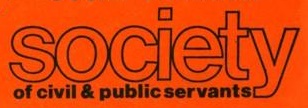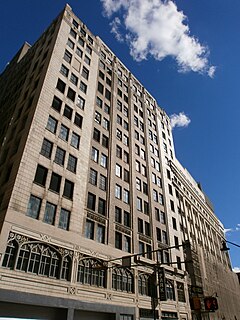
BT Group plc is a British multinational telecommunications holding company headquartered in London, England. It has operations in around 180 countries and is the largest provider of fixed-line, broadband and mobile services in the UK, and also provides subscription television and IT services.

The International Telecommunication Union is a specialized agency of the United Nations responsible for all matters related to information and communication technologies. It was established in 17 May 1865 as the International Telegraph Union, making it the oldest international organization.

Orange S.A., rebranded as Orange, formerly France Télécom S.A., stylized as france telecom, is a French multinational telecommunications corporation. It has 266 million customers worldwide and employs 89,000 people in France, and 59,000 elsewhere. It is the 11th largest mobile network operator in the world and the 4th largest in Europe after Vodafone, Telefónica, Deutsche Telekom. In 2015, the group had revenue of €40 billion. The company's head office is located in the 15th arrondissement of Paris.

Cable & Wireless Worldwide PLC was a British multinational telecommunications services company headquartered in Bracknell, United Kingdom. It was formed in 2010 by the split of Cable & Wireless plc into two companies, the other being Cable & Wireless Communications serving Central America and the Caribbean.

Vodafone Group Plc is a British multinational telecommunications company. Its registered office and global headquarters are in Newbury, Berkshire, England. It predominantly operates services in Asia, Africa, Europe, and Oceania.

Swisscom AG is a major telecommunications provider in Switzerland. Its headquarters are located in Ittigen near Bern. The Swiss government owns 51.0 percent of Swisscom AG. According to its own published data, Swisscom holds a market share of 56% for mobile, 50% for broadband and 37% for TV telecommunication in Switzerland. Its Italian subsidiary Fastweb is attributed 16% of private clients and 29% of corporate clients share of Italian broadband and is also active in the mobile market.

BT Communications (Ireland) Limited is a telecommunications and internet company in Ireland. It is a subsidiary of BT Group plc.

Mercury Communications was a national telephone company in the United Kingdom, formed in 1981 as a subsidiary of Cable & Wireless, to challenge the then-monopoly of British Telecom (BT). Although it proved only moderately successful at challenging BT's dominance, it led the way for new communication companies to attempt the same.

Cable & Wireless plc was a British telecommunications company. In the mid-1980s, it became the first company in the UK to offer an alternative telephone service to British Telecom. The company later offered cable TV to its customers, but it sold its cable assets to NTL in 2000. It remained a significant player in the UK telecoms market and in certain overseas markets, especially in the former British colonies of the Caribbean, where it was formerly the monopoly incumbent. It was also the main supplier of communication in the British South Atlantic, including Saint Helena and the Falkland Islands. It was listed on the London Stock Exchange and was a constituent of the FTSE 100 Index.

Telent Limited is a British radio, telecommunications, and digital infrastructure systems installation and services provision company. The name was used from 2006 for those parts of the United Kingdom and German services businesses of Marconi Corporation which had not been acquired by Ericsson. Companies with Marconi in their name can trace their ultimate origins, through mergers and takeovers, to The Marconi Company Ltd, founded by Guglielmo Marconi in 1897 as The Wireless Telegraph & Signal Company.

The Modern Records Centre (MRC) is the specialist archive service of the University of Warwick in Coventry, England, located adjacent to the Central Campus Library. It was established in October 1973 and holds the world's largest archive collection on British industrial relations, as well as archives relating to many other aspects of British social, political and economic history.

Telecommunications Engineering is an engineering discipline centered on electrical and computer engineering which seeks to support and enhance telecommunication systems. The work ranges from basic circuit design to strategic mass developments. A telecommunication engineer is responsible for designing and overseeing the installation of telecommunications equipment and facilities, such as complex electronic switching systems, and other plain old telephone service facilities, optical fiber cabling, IP networks, and microwave transmission systems. Telecommunications engineering also overlaps with broadcast engineering.
The Corps des télécommunications was a French Technical "grand corps de l'Etat". It is formed of the State Engineers of the Telecommunications.
The Indian Telecommunications Service, widely known as ITS, and earlier known as 'Telegraph Engineering Service Class I' is one of the central engineering services (gazetted) under Group 'A' of the executive branch of the Government of India. The appointment to this service is done through Combined Engineering Services Exam held every year by Union Public Service Commission (UPSC) of India. The service was created to meet the technical needs of the government in areas related to telecommunications. The Department of Telecommunications (DOT) had been managed technically for years by this permanent cadre of central government-recruit-engineers called the Indian Telecommunications Service (ITS).The officers of ITS work under restrictions and rules of central engineering services (conduct) rules.
Cable & Wireless Communications Ltd operating as C&W Communications is a telecommunications company which has operations in the Caribbean and Central America. It is owned by Liberty Latin American and is headquartered in Denver, Colorado.

The Society of Civil and Public Servants (SCPS) was a trade union representing middle-ranking civil servants in the United Kingdom.

Ron Kitchenn was a British electrical engineer.
The Australian Telecommunications Employees' Association (ATEA) was an Australian trade union representing technical and trades employees in the telecommunications industry from 1912 to 1992. Its members were primarily employed by the Postmaster-General's Department, the Australian Broadcasting Control Board and the Department of Posts and Telecommunications.

165 Halsey Street, formerly known as the Bamberger Building, is a 14-story, office tower in Downtown Newark, New Jersey. Built in 1912–1929, it was designed by Jarvis Hunt. The building spans the entire block between Halsey Street, Market Street, Washington Street, and Bank Street. 165 Halsey Street is a major colocation center in New York metropolitan area; according to Center for Land Use Interpretation, it is among the world's largest carrier hotels. It is a contributing property to the Four Corners Historic District.















